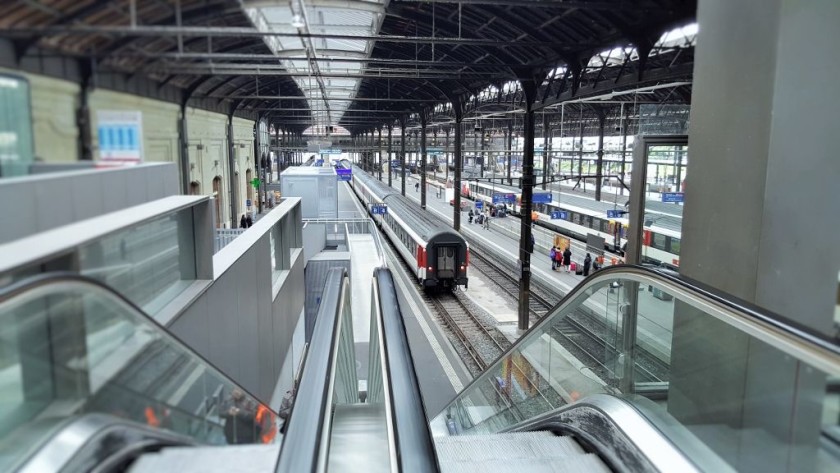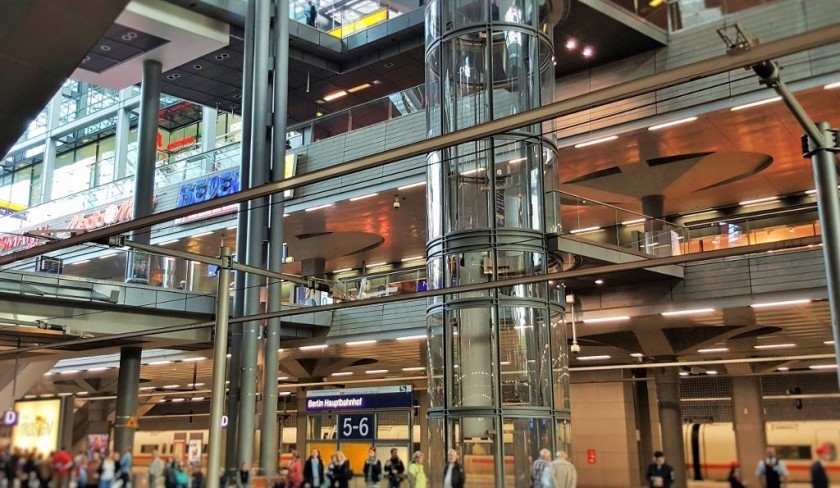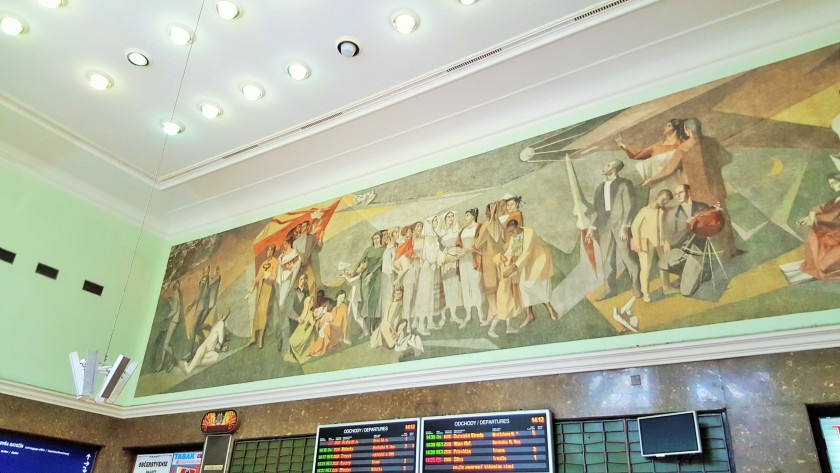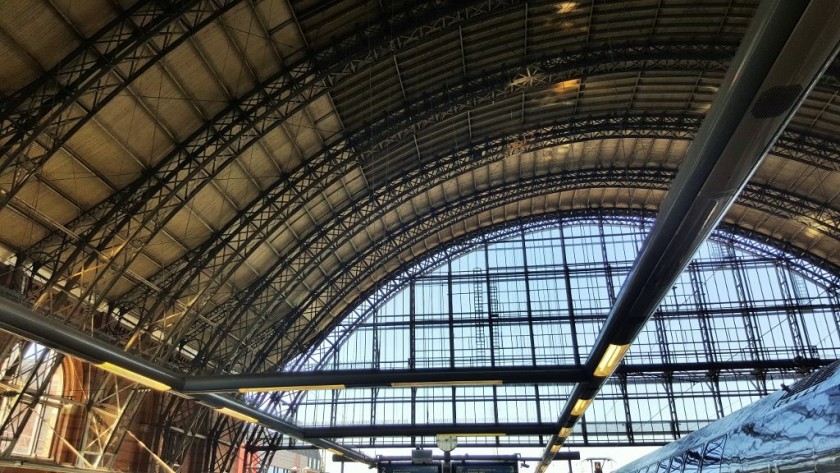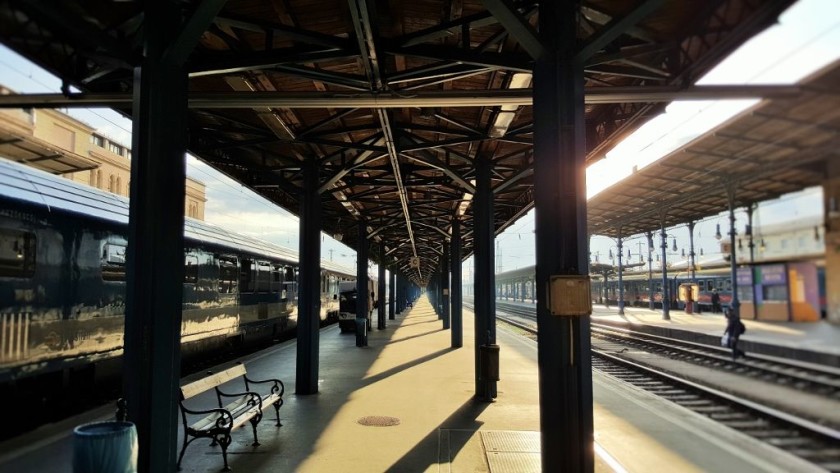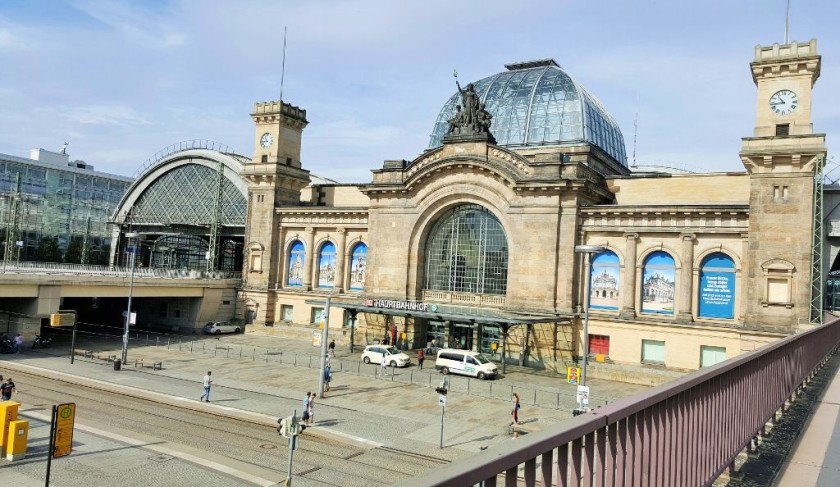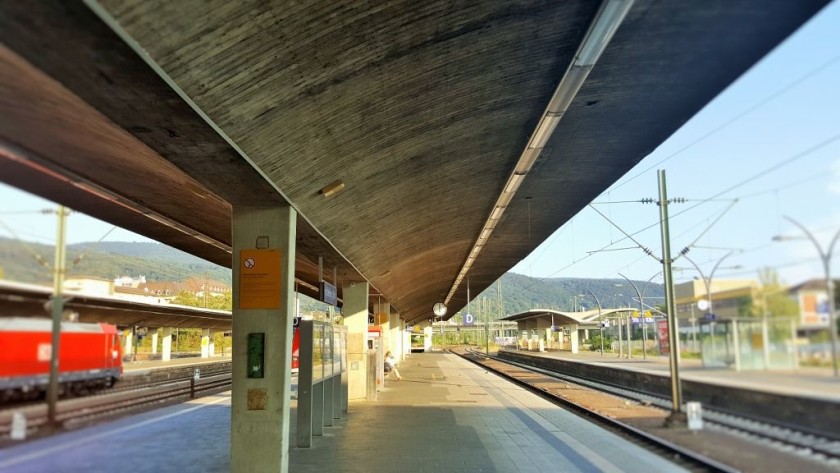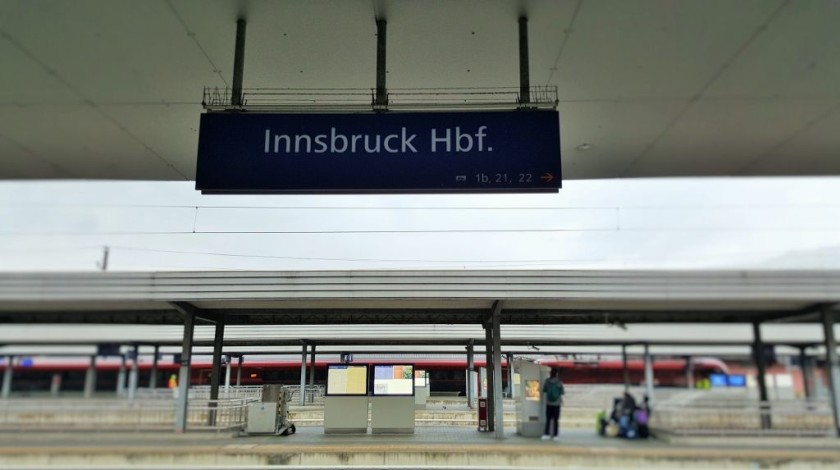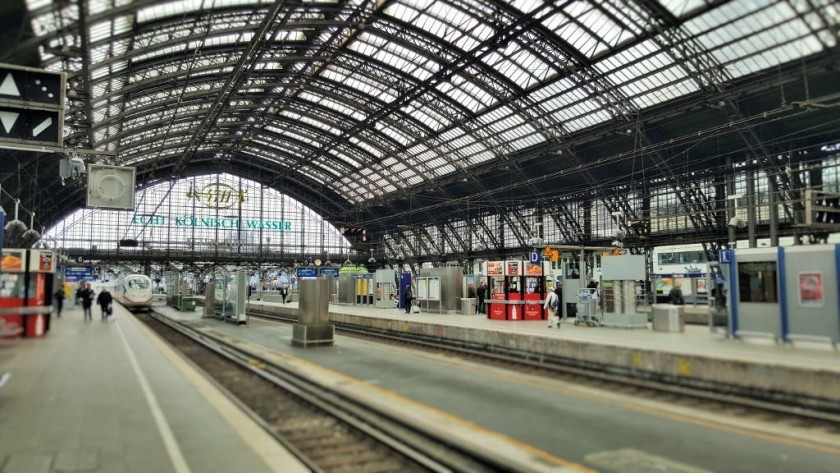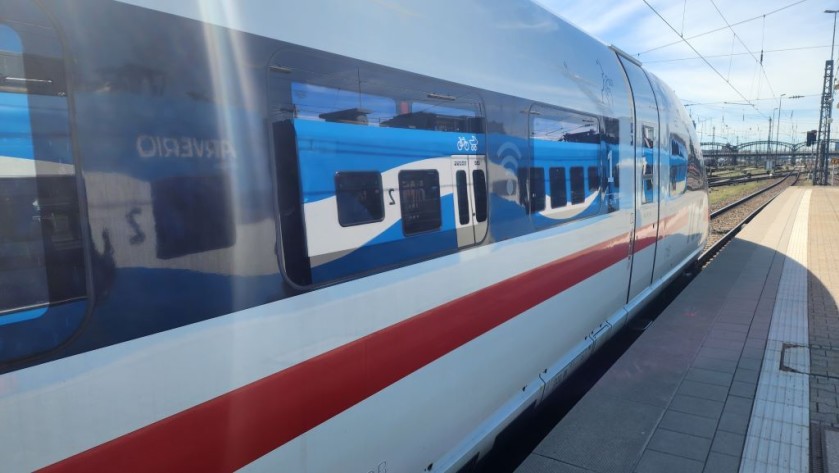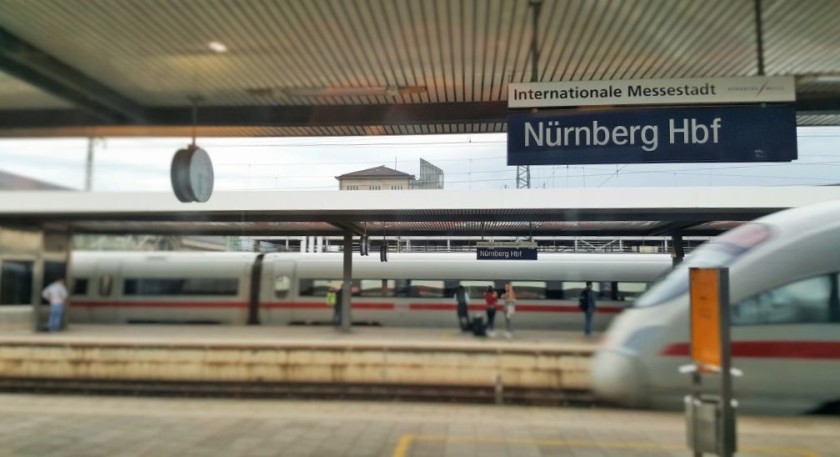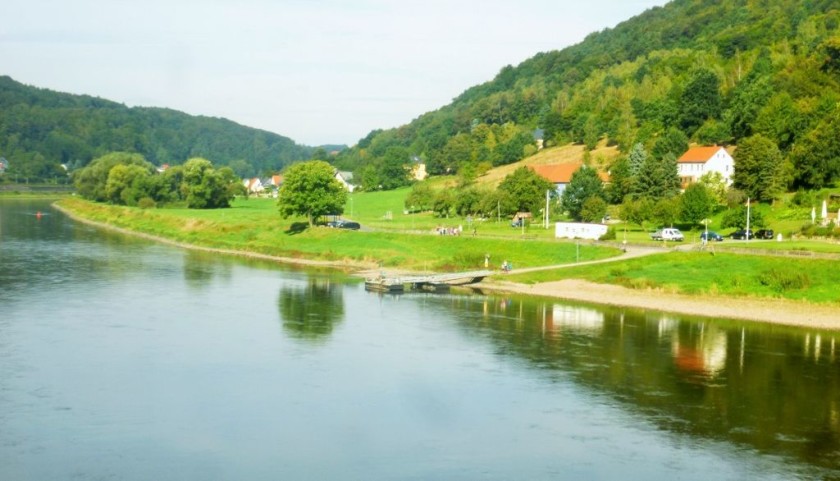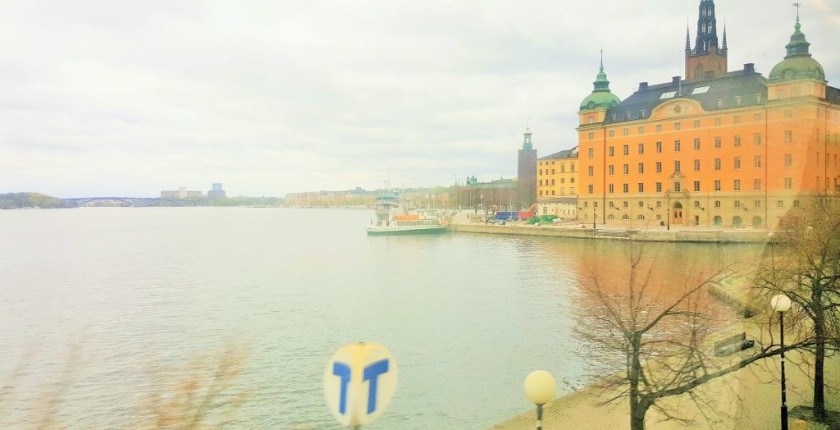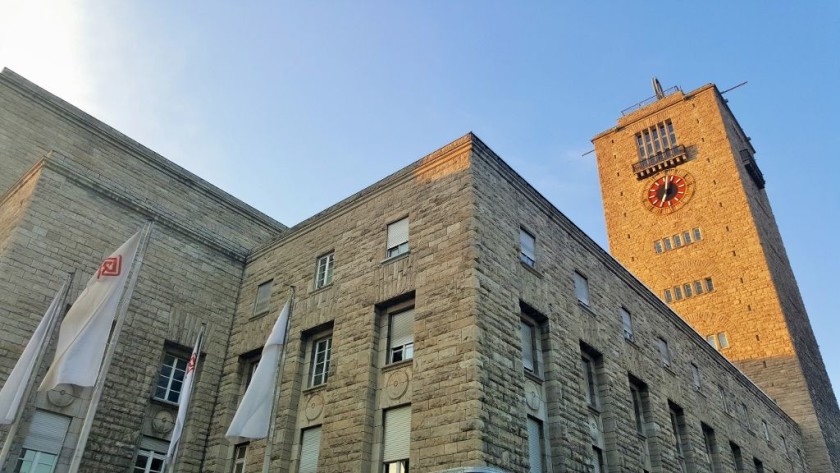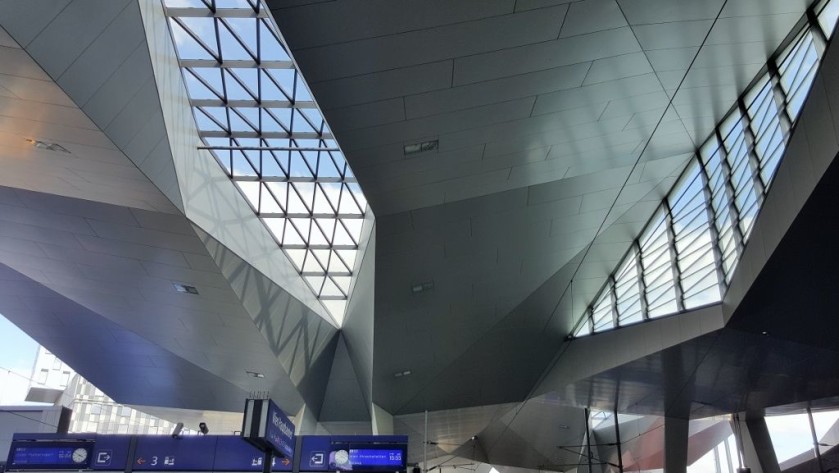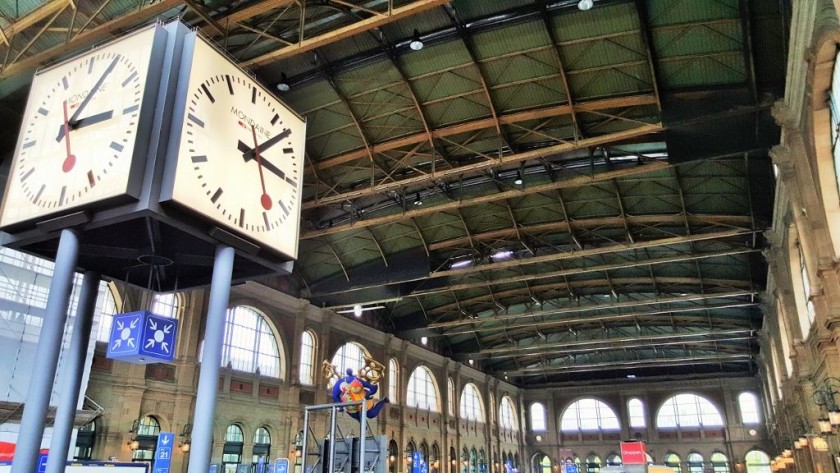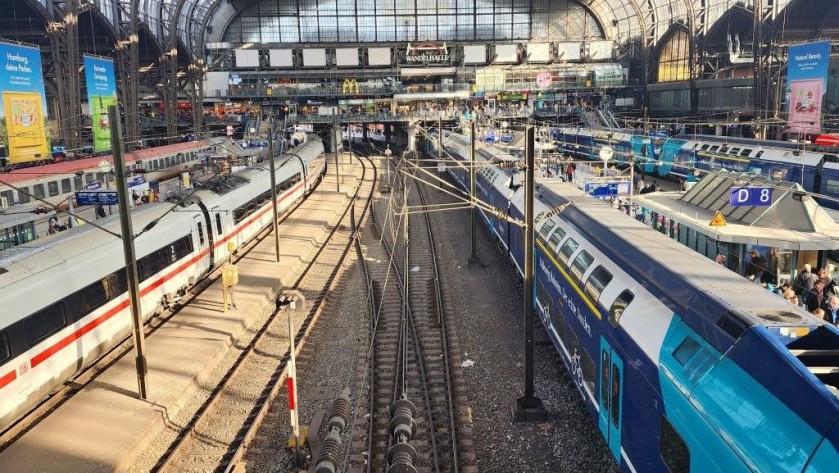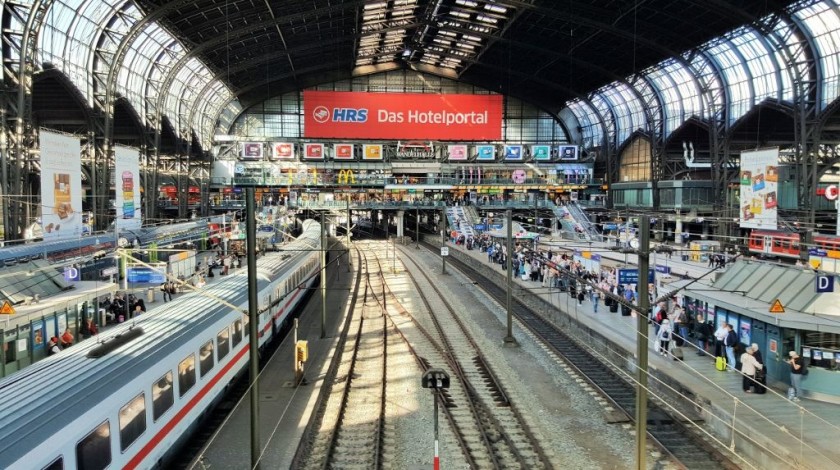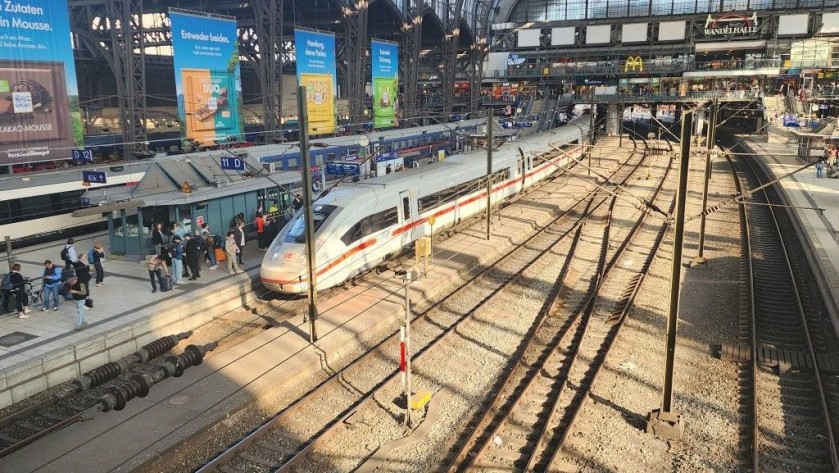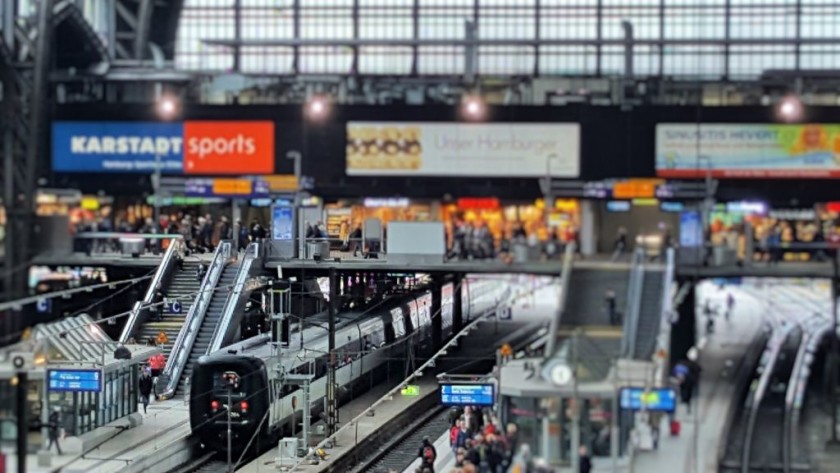Related Content
Content
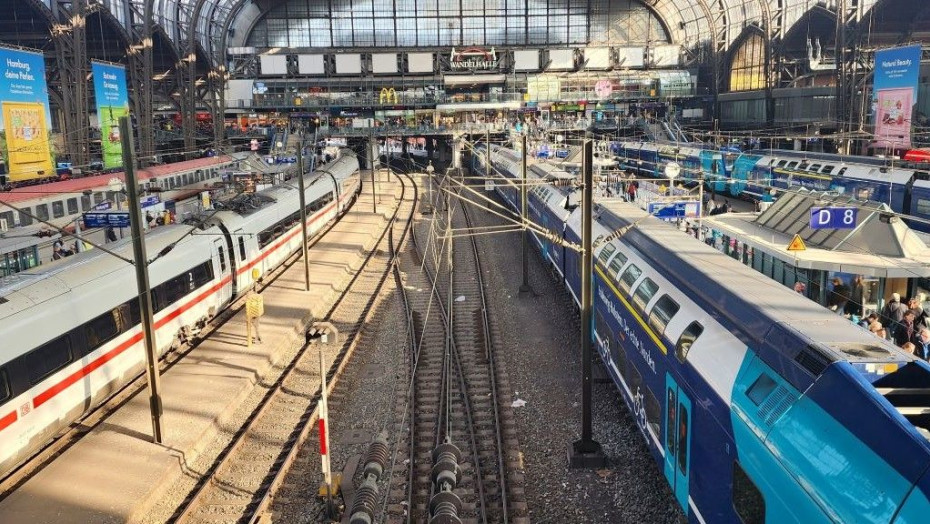
Hamburg Hbf (Hamburg)
Hamburg Hbf, the main train station in Hamburg, is a fabulous location for train and people watching, but for first time users it can be a somewhat confusing station to navigate.
Hence this guide to using the station, which should be a help when arriving in, or departing from Hamburg by train.
Share
At a Glance
Services
Left Luggage
Travel Information Desk
First Class Lounge
Local Tourism Information
Onward Travel
Metro
Car Hire
Taxi Rank
Accessibility
Step Free
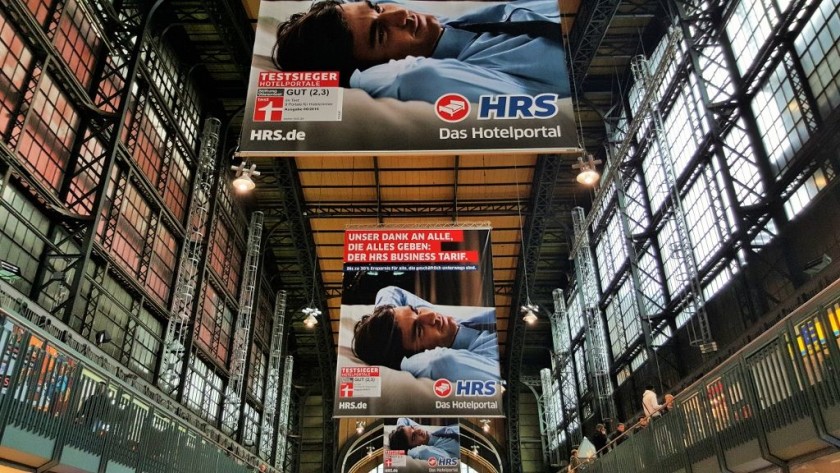
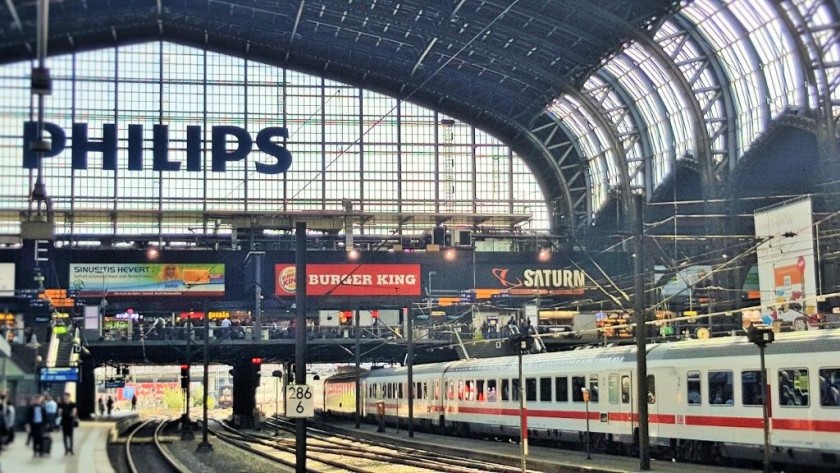
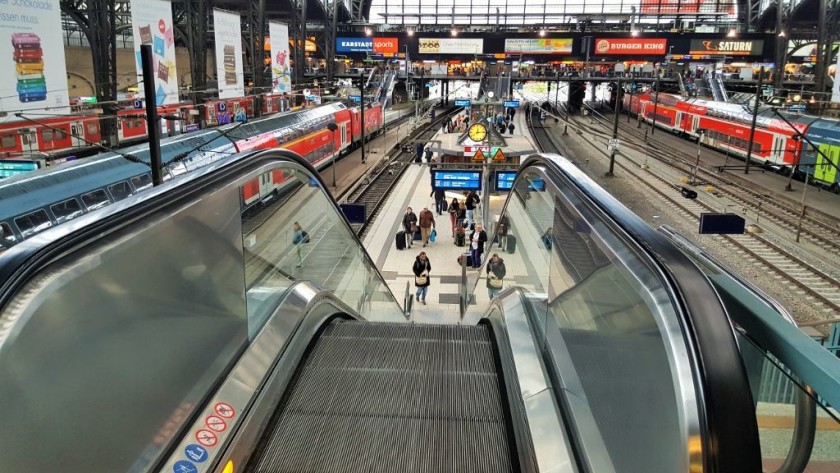
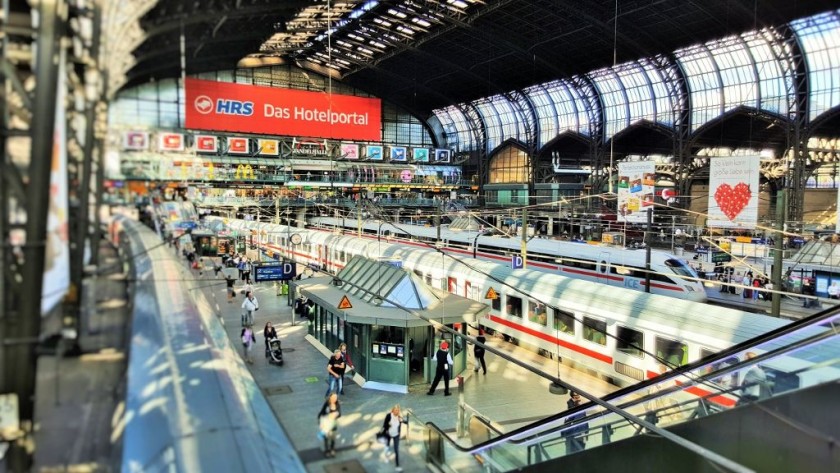
Helpful Links
Train service summary
The usual pattern of direct long-distance train services to and from Hamburg Hbf is:
- Basel via Freiburg and Karlsruhe = 1 x ICE train every other + 1 x Nightjet train
- Berlin = 1 to 3 x ICE trains per hour
- Budapest = 1 x EC train per day
- Dusseldorf = 1 x ICE or IC train per hour
- Dresden = 4 x EC trains per day
- Frankfurt (Main) = 1 x ICE train per hour
- Heidelberg = 1 x ICE train every other hour
- Innsbruck = 1 x Nightjet train
- Koblenz via Bonn = 5 x trains per day (ICE, IC and ICE trains)
- Kobenhavn / Copenhagen = 5 to 7 x IC trains per day
- Köln Hbf = 1 or 2 x ICE or IC trains per hour
- Leipzig = 1 x ICE train every other hour
- Munchen / Munich via Nurnberg (fastest route) = 1 x train per hour
- Praha / Prag = 4 x EC trains per day
- Stockholm = 1 or 2 x night trains
- Stralsund via Rostock = 1 x ICE or IC train every other hour
- Stuttgart = 1 x ICE train every other hour
- Westerland = up to 1 x ICE or IC train every other hour
- Wien / Vienna via Linz = 1 x ICE train per day = 1 x Nightjet train
- Zurich = 1 x ICE train every other + 1 x Nightjet train
See the journey guides for more detailed information
It's easy to reach Hamburg by train, five routes taken by express trains lead to the city and its also a gateway when travelling between Germany and Scandinavia by train.
However, despite most of these trains terminating in the city, Hamburg HBf isn't a terminus station.
Because virtually all of the trains from destinations to the south of the city call in Hamburg Hbf before travelling on to two other stations in the city city, Hamburg Dammtor and Hamburg-Altona.
Though this station, Hamburg Hbf, has been given its name because it is the city's main station and is located in the heart of the city's shopping area and is right by one of the city's most popular attractions, the Museum für Kunst und Gewerbe Hamburg.
Good to know:
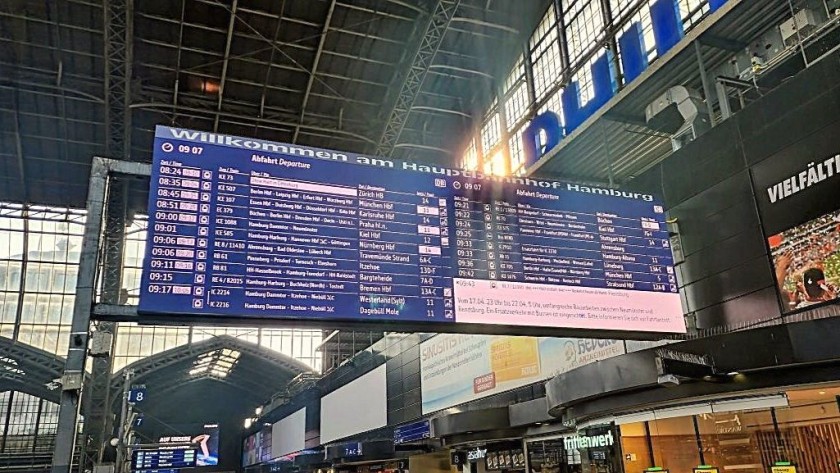
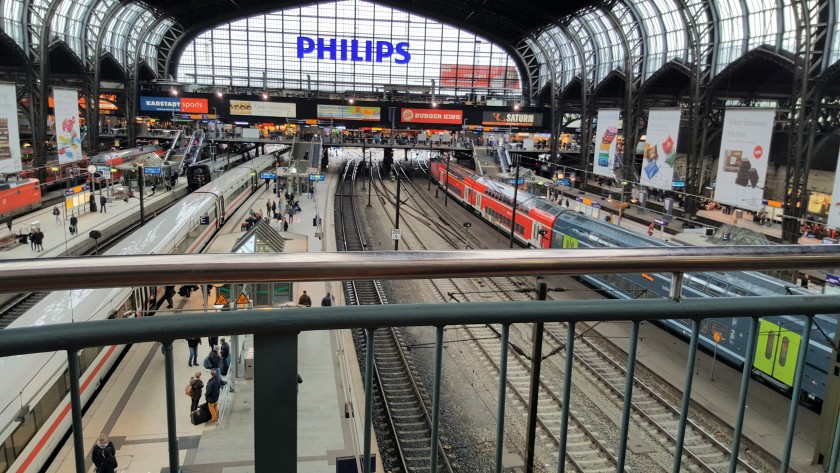
Five things worth knowing about Hamburg Hbf:
(1) The express and Regio trains arrive at and depart from platforms/tracks (gleis) which are below ground level.
But a unique feature of Hamburg Hbf, is that despite the platforms/tracks (gleis) being below street level, an arching glass roof spans the station - so it doesn't resemble an underground station.
(2) Two different concourses, the Wandel-Halle (also known as 'Kirchenallee') and the Sudsteg (also known as the ‘Steindamm'), span the tracks, providing a multitude of entrances/exits and access to/from the trains below.
The Wandel-Halle and Sudsteg names are used on the map of the station, while Kirchenalle and Steindam are used on the signage within the station.
(3) Because Hamburg Hbf is not a terminus station, most of the trains don't spend a lot of time in the station, so each gleis (platform/track) has multiple departures per hour.
(4) Unusually for a hauptbahnhof (a central station in Germany) the gleis (platforms/tracks) in the main station, are also divided in half along their length.
Two separate trains can be using each half of the gleis (platforms/tracks) at the same time.
But instead of an A and B 'numbering system', platform 7A or 9B etc, the gleis (platforms/tracks) are divided into zones - as they are at other stations in Germany.
Therefore what is unusual about Hamburg Hbf is that the zone information isn't solely a guide as to where to wait on the gleis (platform/ track) for easy boarding.
Instead the zone info can indicate which end of the gleis that a train will be departing from.
Therefore at Hamburg Hbf, when a train is only departing from one end of a gleis (platform/track), the specific zones are included along with the numbers, on the departure screens throughout the station.
So if you do see zone info also listed, you'll need to head to these specific zones in order to catch your train.
(5) Another unique feature at Hamburg Hbf is its observation deck from where you can look down on the platforms and trains.
Book Accommodation
When planning a trip, finding convenient accommodation can be trickier than working out which train to take.
Hence ShowMeTheJourney has partnered with the innovative accommodation portal, Stay 22, to offer three options for discovering your optimum accommodation:
1: Use the map above to see which hotel rooms and Vrbo rentals, with easy access to Hamburg Hbf, are available.
2: Or click on these cherry-picked properties, offered by Stay 22 partner Booking.com, which are by Hamburg Hbf and have been selected on the basis of high guest ratings:
Hotel Europäischer Hof Hamburg
IntercityHotel Hamburg Hauptbahnhof
3: Or see what's available with Stay 22's accommodation partners; which include, Expedia, Hotels.com and Trivago - by clicking the large button below.
Stay 22 will 'shuffle' the booki
Questions Answered
ShowMeTheJourney has anticipated what questions are most often asked about taking trains to and from Hamburg Hbf and answered them below.
If you can't find the information you are seeking, you can ask a question and the AI enabled service will try to write an answer, telling you what you wish to know.
Is there step-free access to and from the platforms /tracks?
Despite the gleis (platforms / tracks) that the express and regional services use being below street level, there is no need to use stairs when transferring to and from these trains.
From the zones C, D and E in the middle of the station, there are obviously placed escalators that link the gleis (platforms / tracks) with both of the street-level concourses.
When arriving by train, the lifts / elevators that provide an alternative to the escalators aren't as obvious as they are located behind the escalators - if you step off on a train in zones A, B, C, F or G take care not to walk by these lifts when looking for the exit.
How to travel between Hamburg Hbf and the city centre?

Hamburg Hbf is superbly located in the eastern half of the city centre, between the main shopping area; follow the signs for Monckebegstrabe - and the Binnenalster, which is the lake in the heart of the city.
- For the Reerperbahn take any S-Bahn train from platform/gleis 1 to the station of the same name - The entrance to gleis 1 is just outside the main station building.
- For the Speicherstadt historic dockyard area, the easiest connection from Hamburg hbf is to take the M6 bus, as the Speicherstadt has no U-Bahn station
- The nearest U-Bahn station to the western end of Speicherstadt, where Minatur Wonderland is located, is Baumwall.
- Baumwall is also the nearest U-Bahn station to the new Elbphilharmonie Hamburg concert hall complex.
To access Baumwall station from Hamburg hbf take line U3 (direction Barmbek) - When arriving by express train follow the signs pointing the way to Steindamm
How can tickets be purchased for the public transport connections?
When booking your rail ticket from a location in Germany on the DB website, it's possible to select the stations served by the S-Bahn trains, as to or from locations.
Or if you travel to or from Hamburg with any ticket except Super Sparpreis / Super Saver tickets, the ticket will include a City Ticket, which can be used to hop on the S-Bahn trains.
However, if you have booked to the city's main rail stations, or generally to Hamburg, with options that don't include a City Ticket, you will need to purchase a ticket for the part of your journey by the S-Bahn trains.
Single journey tickets for travel by the S-Bahn train can be purchased from ticket machines or online.
Rail passes such as Eurail, Interrail and the D-Ticket can be used for journeys by the S-Bahn trains.
Booking tickets for the U-Bahn, tram and bus
The public transport network in Hamburg is managed by HVV.
All types of ticket can be purchased online or in the HVV app.
When visiting the city, the Hamburg Card covers 1 to 5 days of travel on public transport, plus a 50% discount on more than 150 tourist attractions.
How to travel between Hamburg Hbf and the airport
Hamburg Flughafen/Airport has a train station directly linked to both terminals.
Local trains operate every 10 mins between the airport and central Hamburg on line S1, the journey time between the airport station and Hamburg Hbf is around 25 mins.
Other stations in Hamburg that the trains on line S1 also call at include, Reeperbahn, Jungfernsteig and Landungsbrucken.
From Hamburg Hbf to the airport by train:
S-Bahn trains heading to Hamburg Flughafen/Airport on line S1 - depart from Gleis (platform/track) 3 in Hamburg Hbf.
Something to look out for when travelling TO the airport is that the trains heading to Hamburg Flughafen/Airport station, are joined to trains heading to Poppenbutel or Kornweg stations.
When the train subsequently arrives at Ohlsdorf station, the train is split into two halves, three cars head off for the Flufghafen and the other three head off to Poppenbutel or Kornweg.
So when going to the airport, check that you are in the right part of the train - there are signs on the platform, including on the floor, showing where to board if you're heading to the airport.
Not every train from gleis 3 will be heading to the airport so keep an eye on the departure screens and check the destination info on the trains
Are there cafes or restaurants available?
There are more than 15 food and drink outlets in Hamburg Hbf -Though if you want a full-meal service between trains, a good option is to head across the street from the main exit at the Wandel-Halle/ Kirchenhalle concourse to the Schifferbörse Restaurant, which offers a traditional German menu.
Is there a First Class lounge?
Yes there is a lounge which can be accessed by;
- BahnBonus status customers* and one person accompanying them*
- BahnCard 100 1st class holders and one accompanying person*
- Travellers with a current DB long-distance ticket 1st class in the Flexpreis tariff
*= holding tickets for travel that day
It is located by the Wandel-Halle/ Kirchenhalle concourse
Are there left luggage facilities?
There are left-luggage lockers in three locations within the station, which can be accessed 24 hrs a day.
The lockers are coin-operated, but machines are available which enable 'payment' of coins by bank / credit cards.
Arriving by express and Regio Train:
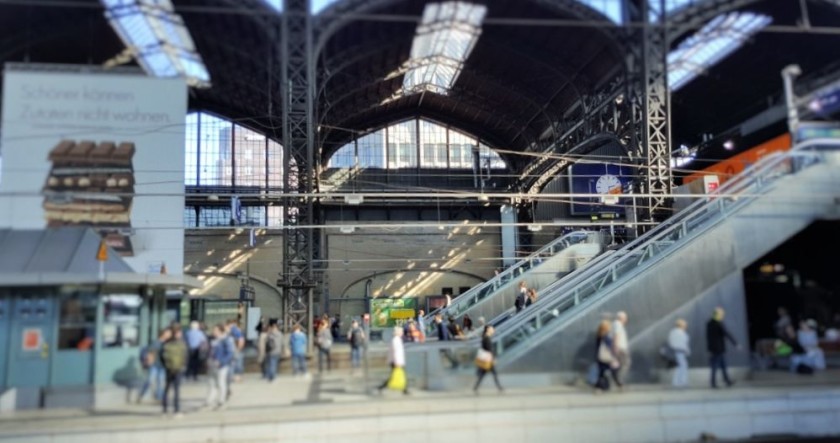
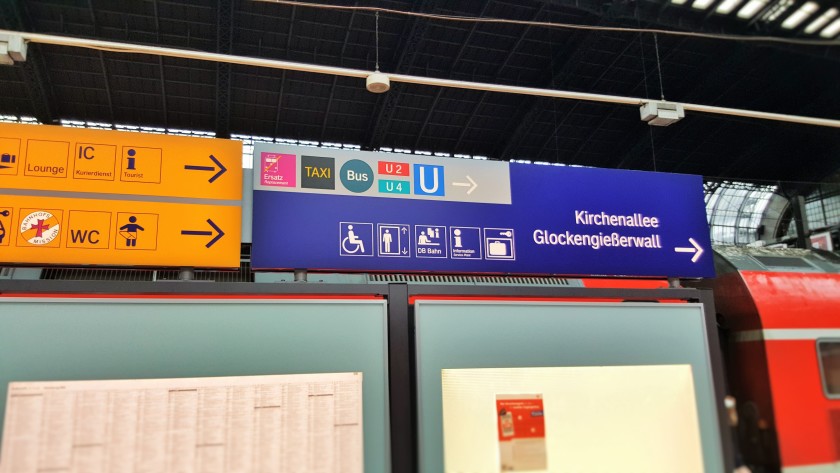
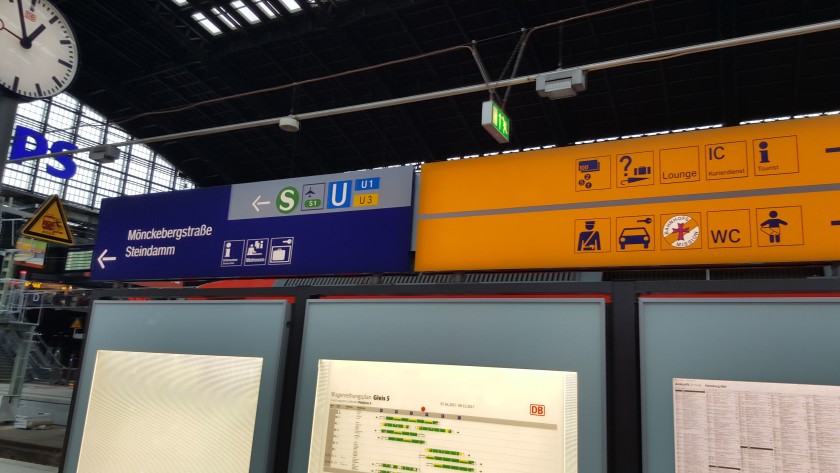

Hamburg Hbf isn't a terminus station, so when you step off a train, the optimum exits from each platform/track (gleis) aren't particularly obvious.
There will multiple exits available, so following the crowd and using the nearest stairs or escalators may not be your best option, so take your time and seek out the signs, which will help point you in the right direction.
Eight Things Worth Knowing About Arriving in Hamburg Hbf by ICE, IC, EC and Regio trains;
(1) It won't initially be obvious, because the station isn't underground, but the platforms/tracks (gleis) which the ICE, IC, EC and Regio trains use at Hamburg Hbf, are actually below street level
So you need to ascend by escalator, lifts, or stairs to exit the station, or to access the parts of the station used by other trains.
(2) The part of the station used by the long distance and Regio trains is spanned by two separate concourses, which are up at street level.
They are named
- the Wandel-Halle (also known as 'Kirchenallee'), and
- the Sudsteg (also known as the ‘Steindamm').
The two concourses mean that there are two sets of stairs, escalators and lifts leading up from each gleis/platform/track.
(3) Both concourses have exits/entrances at street level, and give access to the S-Bahn local trains - So if you're connecting to the S-Bahn, it doesn't matter which set of escalators etc that you use.
(4) Both concourses also have taxi ranks, so if you’re continuing your journey by taxi, you may as well use which ever exit is nearest to you, when you step off of the train.
(5) However, the Wandel-Halle, also known as the 'Kirchenhalle' is the main concourse at Hamburg Hbf.
When arriving from the south by ICE train it is the concourse located closest to the front of the trains.
It houses:
- the main ticket office,
- the Reisenzentrum reservation desk,
- most of the shops
- the observation deck that gives great views down on to the trains.
It also:
- happens to be closer to the city centre/main shopping area
- has the easiest access to U-Bahn lines U2 and U4
(6) The Sudsteg, also known as the Steindam, is the concourse located closest to the rear of the trains, which have arrived from the south.
If you’re connecting to U-Bahn (metro) lines U1 and U3, then make your way to the Sudsteg concourse.
(7) The signs on each gleis (platform/track) can be a big help in pointing you in the right direction, but these signs DON'T use the Wandel-Halle and Sudsteg names.
So for the Wandel-Halle follow the signs pointing the way to the 'Kirchenallee' - and for the Sudsteg follow the signs pointing the way to the ''Steindamm.
(8) If you have heavy luggage etc it’s worth seeking out the elevators on each platform/gleis - which lead up to both concourses.
They can be somewhat hidden behind the escalators.
Connecting to S-Bahn (local) trains:
The local (S-Bahn) trains are the best option for accessing many parts of Hamburg city centre from Hamburg Hbf, they tend to travel to different parts of the city than the U-Bahn (metro) trains.
They also link Hamburg Hbf station to Hamburg's airport.
If you'll be taking an S-Bahn train on from Hamburg Hbf, it doesn't matter which exit you take from the gleis (platform/track) which your train has arrived at.
Heading east:
The S-Bahn trains heading east, including the trains to the Flughafen (airport), depart from gleis (platforms/tracks) 3 and 4.
These are located in the main station hall beside the gleis (platforms/tracks) used by the express and Regio trains
Heading west:
S-Bahn trains heading west depart from gleis 1 and 2 which are located in a separate part of the station.
You have to step out of the main station building to access them.
The trains via Reeperbahn usually depart from gleis 1 and those via Dammtor usually depart from gleis 2.
Connecting to the U-Bahn (metro)
If you want to connect to the U-Bahn (metro) - check which line you need to take before you arrive at Hamburg Hbf.
That's because there are two separate U-Bahn stations within the Hamburg Hbf complex.
(1) The 'Nord' U-Bahn station is used by lines U2 and U4.
This 'Nord station' is best accessed from the Wandel-Halle - so follow the signs pointing in the direction of Kirchenallee.
(2) The 'Sud' U-Bahn station is used by lines U1 and U3.
This 'Sud' station is best accessed from the other concourse, the Sudsteg - follow the signs leading to Steindamm.
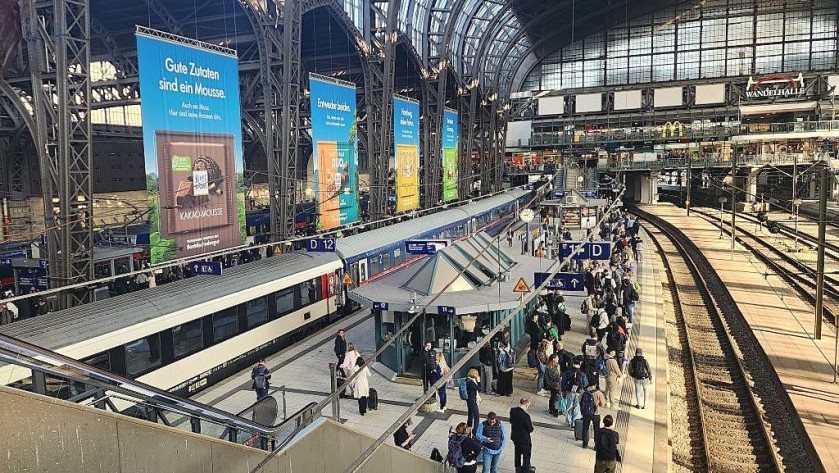
Departing by express and Regio train;
The majority of the long distance trains that depart from Hamburg Hbf are passing through the station, so each platform/track (gleis) has multiple departures per hour.
Therefore try not to rush; it can be comparatively easy to board the wrong train at Hamburg Hbf.
Finding your train:
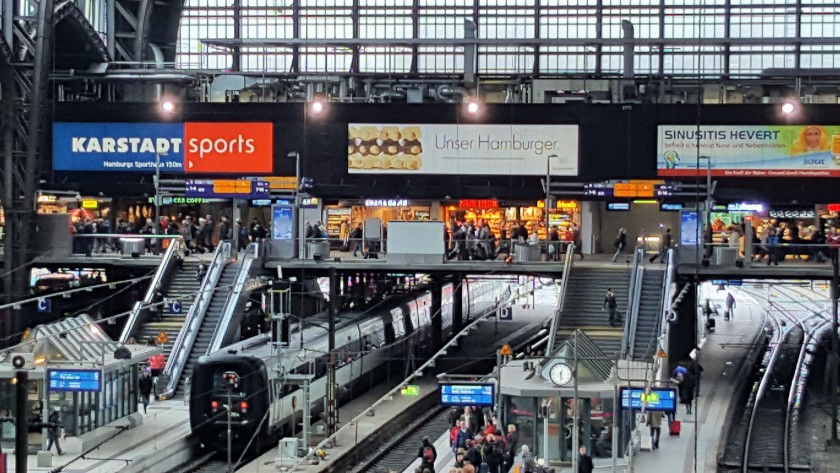
If your train isn’t yet listed on the main electronic displays located on either concourse - you can use the yellow paper timetable 'Abfahrt' sheets to discover, which platform your train will be (should be) departing from.
What isn't particularly obvious when taking a train from Hamburg Hbf is that SOME trains only use one particular end of each gleis (platform/track) - so will only use some of the specific zones on each gleis.
For example, it's possible that a train will be departing from zones A-C - while at the same time, an entirely separate train will be using the same gleis/platform but will be departing from zones D-F.
At Hamburg Hbf, these specific zones are used on the main departure boards and the other departure info.
It's something to be aware of, because for example, if you were to wait in zone D for a train that's departing from zones A-C - then the departure monitor in zone D may not show the details of your train.
Also worth knowing is that when you reach the zone* on the platform/track (gleis) which your train is leaving from, it may not be the next train to depart.
The next two subsequent departures will also be shown on the electronic departure indicator that will be on the platform.
*Some trains use all the zones on the on the platform/track (gleis).
Changing trains:
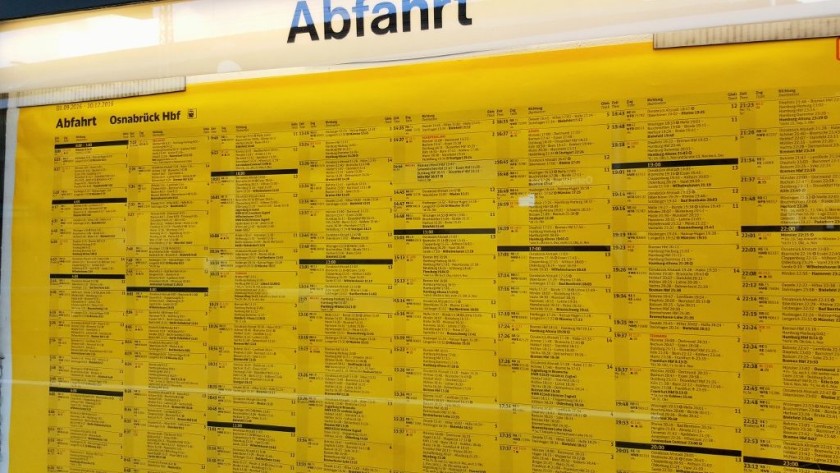
When changing trains at Hamburg Hbf, look for the yellow departure 'Abfahrt' sheet on the platform/track (gleis) that your train will have arrived at.
If you're in luck you may simply to have to wait on the same platform for your connecting train.
Boarding:

Double check that you’re waiting on the correct platform by looking at the poster on the platform - which will have all the departures listed on it (the Wagenreihungsplan).
If you have a reserved seat, you can use this poster to check which zone of the platform you need to be waiting on, in order to be close to the coach carriage that you will be travelling in.
If you haven’t reserved, then the zone information will also show you where to wait on the platform for easy boarding into 1st and 2nd class.
Before your train arrives it’s worth confirming this zone information on the electronic indicator – the paper information indicates what is SUPPOSED to happen, but trains can arrive back to front.
At Hamburg Hbf travellers taking the IC and ICE express trains, tend to congregate on the central section of the platform in zone D - between the banks of escalators.
So if you haven't got a reservation it can be a good idea to work out which other zones on the platform your train will be using.
Do this and you can then get away from the crowds and maximise your chances of finding a spare seat (s).
The other stations in Hamburg:
Hamburg Hauptbahnhof/Hamburg Hbf is one of three major train stations in central Hamburg - it is the main station and is closest to the city centre, hence it being named as the hauptbahnhof.
It actually has particularly convenient location in the heart of the city, minutes away from the main shopping area.
However, before leaving the train at HamburgHbf, check whether your final destination is closer to the other two city centre stations.
(1) The majority of long distance trains TO Hamburg call at Hamburg Hbf before going on to Hamburg-Dammtor.
This is the closest station to the university and The Congress Centre.
(2) Hamburg-Altona station is located on the far western edge of the city centre.
When boarding many long-distance trains to Hamburg Hbf - the final destination shown on departure indicators will be Hamburg-Altona.
That's because many IC and ICE trains to the city finish their journeys at this station.
Trains heading to Hamburg-Altona call at Hamburg Hbf and Hamburg-Dammtor.
Many trains to the city also call first at Hamburg Harburg station before they arrive at Hamburg hbf.
However, this station is in the suburbs, some distance from the city centre.
So take care NOT to leave the train here if you're heading to central Hamburg.
City Guides
If you're on a rail pass itinerary which includes Germany and Scandinavia you'll have to change trains in Hamburg, but it's a fascinating city, worth dedicating some time to on a trip around Europe.
10 Of The Best Things To Do in Hamburg (The Guardian)
25 Of The Best Things To Do (The Crazy Tourist)
The Best Things To Do (Time Out)
7 Unusual Things To Do (Off The Path)
20 Fun Things To Do (Drifter Planet)
Please support ShowMeTheJourney
This second version of ShowMeTheJourney is exciting and new, so we are genuinely thrilled that you are here and reading this, but we also need your help.
We’re striving not to let anything get in the way of providing the most useful service possible, hence a facility has been set up with DonorBox which can be used to support the running costs and make improvements.
Instead of advertising or paywalls, your financial support will make a positive difference to delivering an enhanced service, as there’s a lot of ideas which we want to make happen.
So if you have found the info provided here to be useful, please go here to say thank you.
Journeys
# Jump to a directionJourneys from Hamburg Hbf
Jump to directionsHamburg to Basel / Bâle by train
Hamburg to Berlin by train
Hamburg to Bratislava by train
Hamburg to Bremen by train
Hamburg to Budapest by train
Hamburg to Dresden by train
Hamburg to Frankfurt by train
Hamburg to Hannover by train
Hamburg to Heidelberg by train
Hamburg to Innsbruck by train
Hamburg to Koblenz by train
Hamburg to Köln / Cologne / Koeln by train
Hamburg to København / Copenhagen by train
Hamburg to London by train
Hamburg to München / Munich by train
Hamburg to Nürnberg / Nuremberg by train
Hamburg to Praha / Prague / Prag by train
Hamburg to Stockholm by train
Hamburg to Stralsund by train
Hamburg to Stuttgart by train
Hamburg to Westerland by train
Hamburg to Wien / Vienna by train
Hamburg to Zürich / Zurich by train
Journeys to Hamburg Hbf
Jump to directionsAmsterdam to Hamburg by train
Basel / Bâle to Hamburg by train
Berlin to Hamburg by train
Bruxelles / Brussels to Hamburg by train
Budapest to Hamburg by train
Frankfurt to Hamburg by train
From Bern to Hamburg by train
Innsbruck to Hamburg by train
Köln / Cologne / Koeln to Hamburg by train
København / Copenhagen to Hamburg by train
London to Hamburg by train
München / Munich to Hamburg by train
Paris to Hamburg by train
Praha / Prague / Prag to Hamburg by train
Stockholm to Hamburg by train
Wien / Vienna to Hamburg by train
Zürich / Zurich to Hamburg by train
This second version of ShowMeTheJourney is exciting and new, so we are genuinely thrilled that you are here and reading this, but we also need your help.
We’re striving not to let anything get in the way of providing the most useful service possible, hence a facility has been set up with DonorBox which can be used to support the running costs and make improvements.
Instead of advertising or paywalls, your financial support will make a positive difference to delivering an enhanced service, as there’s a lot of ideas which we want to make happen.
So if you have found the info provided here to be useful, please consider saying thank you.

This is one of more than 100 train travel guides available on ShowMeTheJourney, which will make it easier to take the train journeys you want or need to make. As always, all images were captured on trips taken by ShowMeTheJourney.






